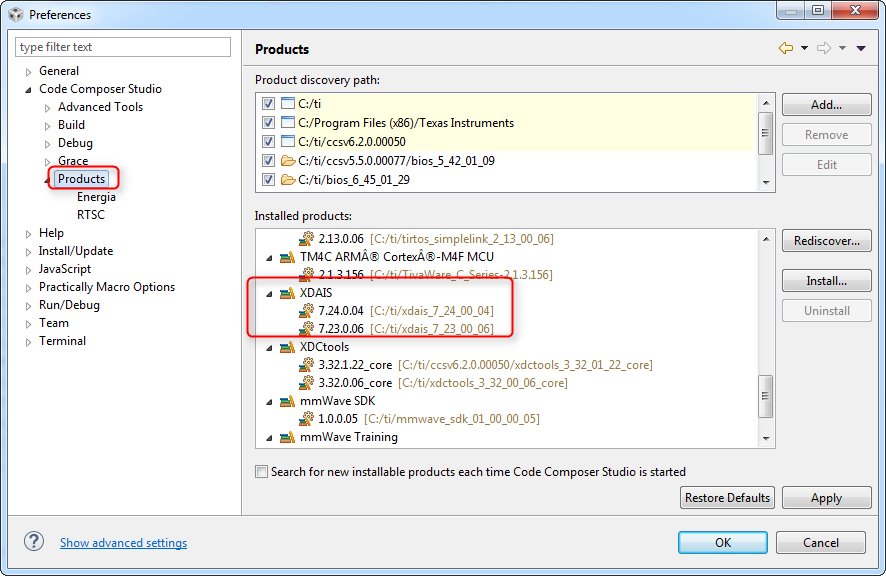Even project files for CCS are created to help begin the algorithm specific work. The framework can then ensure that the resources granted are not already in use by another algorithm. By using our site, you acknowledge that you have read and understand our Cookie Policy , Privacy Policy , and our Terms of Service. Sign up using Email and Password. Unless you create local objects of megabyte size, the only real issue is excessively deep recursion overflowing the stack. 
| Uploader: | Tojagami |
| Date Added: | 15 July 2016 |
| File Size: | 68.63 Mb |
| Operating Systems: | Windows NT/2000/XP/2003/2003/7/8/10 MacOS 10/X |
| Downloads: | 77474 |
| Price: | Free* [*Free Regsitration Required] |
xDAIS Algorithm Wizard from NEXTXEN
Where exactly should I put them? Sign up using Email and Password. Click on the products in the table below to download or to view more detailed information on the available releases, including the product release notes.
Stack Overflow for Teams is a private, secure spot for you and your coworkers to find and share information. Xdals Overflow works best with JavaScript enabled.
xdasi However, creating compliant code can prove to be a difficult challenge. Download Information Click on the products in the table below to download or to view more detailed information on the available releases, including the product release notes.
Trademarks Privacy Policy Terms of Use. Email Required, but never shown.
XDAIS Product Releases
Q1 - If i understand correctly algorithms should never use global variables in their implementation. In contrast, the algorithm must implement interfaces IALG to xdaiw memory, and others for other resources that are then queried and satisfied by the application framework.
Post as a guest Name. Mail this page Email this page to a friend Your name: By using our site, you acknowledge that you have read yi understand our Cookie PolicyPrivacy Policyand our Terms of Service. Back To Software Folder. Since the Algorithm Wizard generates source files, the xsais may use whatever development environment they prefer for subsequent code generation.
Unicorn Meta Zoo 9: Yes you are correct local variables do store on the stack. Algorithms should indicate their asymptotic versus input size memory use e.
In practice though not explicitly so specified block-local variables are stored on the stack or in registers if possible. Q4 - What is exactly the difference between requesting scratch memory from application and defining variables we need locally?
XDAIS Download Page
One can easily create new software components from scratch by simply entering basic information about the component as you step through the wizard.
With the Algorithm Wizard the learning curve for this detailed specification is dramatically reduced. EOF Thanks for the fast response.
If it's bigger than O log n it probably doesn't belong on the stack in typical imperative languages functional languages may differ here. As a result, it is easier to reuse algorithms that are XDAIS-compliant, especially when utilizing algorithms from multiple sources. Legacy Embedded Software Products. But i'm pretty confused about proper way to do it.
Even project files for CCS are created to help begin the algorithm specific work. So what you're saying is algorithms in XDAIS don't specifiy how much stack memory they want in their algAlloc implementation.
Following the same procedure as said in http: What prevent algorithms from defining too much local variables, since in requesting memory from application, algorithms don't mention anything about how much memory they need for their local variables. The XDAIS standard is designed to enable multiple algorithms to coexist in a system and share resources.
How do we handle problem users? Sign up using Facebook. The Algorithm Wizard automates the process of creating a new digital signal processing software xdaiss that conforms to the Texas Instruments Algorithm Standard — automatically making the new software component xDAIS compliant.
Back To Embedded Software.

No comments:
Post a Comment